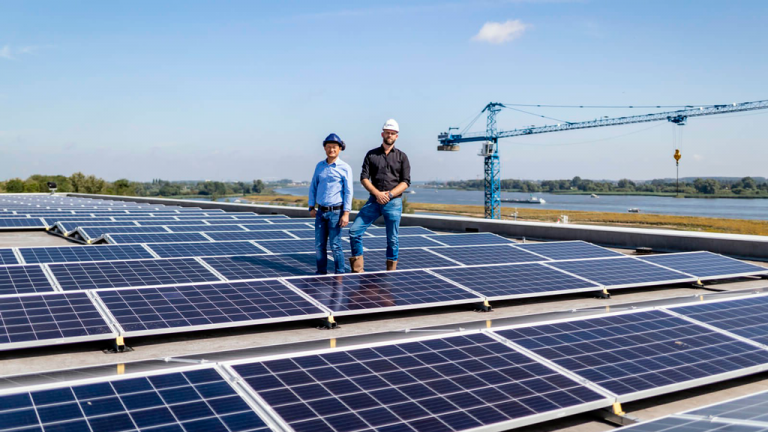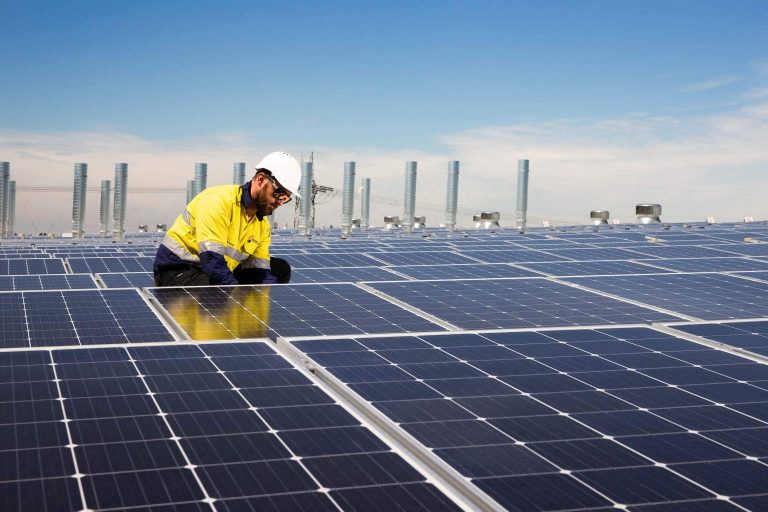Do you cringe looking at your monthly electricity bills?
Does going green make you see red when you imagine the costs?
Well, hold your horses before ruling out renewable energy. These aren’t your grandpa’s solar panels. Technologies have advanced, and prices have dropped, making green energy an affordable way to power your pad.
So, plug into this blog as we socket out the real deal on budget-friendly systems to turn your home an eco-friendly green. You’ll be blown away when you realize the green grass can get greener on your side!
The Cost of Going Green
First things first, we need to talk about dollar bills.
Renewable energy has a rep for being an upper-class luxury. But due to advanced technology and government sweeteners, greenifying your home is easier on the wallet than you bargained for.
Installation expenses can seem intimidating at first glance. But once you pencil in the incentives along with long-term cost cuts, you’ll realize going green won’t clean out your wallet.
Beam Me Up: Solar Power from the Sun
Let’s soak up some solar knowledge! Sun-powered systems transform light into energy through photovoltaic cells. They gobble up rays when the sun is out and deliver clean electricity right to your outlets. No pollution or fuel involved!
But how much will this panel party set you back?
Prices have plunged over 70% in the last decade, making solar energy competitive with other utilities. Plus, federal and local tax breaks can chop 30% or more off your total solar costs! You’ll also slash those power bills as your system generates free energy from the sky. The panels may cost $15,000+ to start but with incentives bringing it closer to $10K and $100 monthly savings. Still, it is sure that this sun-fueled system will pay for itself within ten years.
Earth to Home: Geothermal Systems
What if we told you the soil below could warm your home in winter and cool it in summer? Geothermal heat pump systems tap into shallow ground warmth to control indoor temperatures. An underground loop pipe and heat exchanger connect to your HVAC unit.
Though pricier upfront, costing $15,000-$30,000 installed, the DOE estimates geothermal systems save homeowners 30-70% on heating/cooling versus conventional systems! Plus, enjoy 30% federal tax credits and additional local rebates to alleviate the sting. Saving $300+ yearly on utilities, it soon pays for itself. Now that’s down-to-earth-savings!
With these green energy options delivering serious savings long-term, concerns over eco sticker shock can float away. But exactly how much you save depends on your unique situation. Let’s dig deeper into the dollars and cents behind running a renewable-powered household!
Installation Explanation
Starting a renewable energy project means upfront installation expenses before the savings roll in. Shelling out tens of thousands for a new solar array or wind turbine can seem scary. But there are ways to curb costs!
Do your homework – get quotes from several vendors before deciding. And financing options like loans with low-interest rates allow you to reap the rewards now while paying over more than 5-10 years.
Grants or incentive programs can also help cover your initial investment to go renewable. With installation costs falling yearly, it keeps getting more affordable to go green from the ground up.
Upkeep Ups and Downs
You’ll want your renewable energy system to spin, pump, and soak up rays for years to come. So, maintenance costs are part of the package, from minor component replacements to inverter swaps down the road.
The good news? Renewable setups run reliably with little intervention when installed correctly. Solar arrays simply need glass cleaning and wiring checks over decades of operation. Average maintenance runs just $70-$100 yearly. Pretty pennies compared to the energy savings! Geothermal systems also hum along smoothly with yearly upkeep budgets of around $250 for pump check-ups and parts.
Incentives to the Rescue
This is where it gets juicy! Federal, state, and utility incentives slash renewable energy costs like a harvester to crops. Tax credit programs help recover 25-30% of your purchase costs. For example, claiming the federal solar tax credit saves you roughly $6,000 on a $20k system. Combined state and local breaks can add thousands more in rebates.
Whether bonuses for solar, geothermal, small wind, or hydropower, incentives take a machete to project expenses. Programs like net metering credit excess energy pumped back into the grid from your panels or turbines.
Energy bill offsets drive renewable profitability through the roof. Offsetting equipment costs shortens the payback period on your green investment. With incentives sweetening the savings, let’s explore real-life household case studies.
Case Studies
Green Dreams on a Budget
Are you curious about what budget-friendly renewable energy looks like in the real world? From a teacher powering his house with the wind to a family’s DIY hydropower, these case studies illuminate affordable and effective home setups. Observe and analyze their costs, incentives utilized, and how quickly the systems paid themselves off!
- Mr. Sunny’s Solar Savings Mr. Sunny was tired of his $200 monthly electricity bills and Arizona’s ruthless heat. So, he installed a 6-kW residential solar panel system for $18,000 before incentives.
- With federal, state, and utility solar credits slashing costs by 65%, his final price was $6,300! Now providing 90% of his household’s electricity, the DIY solar panels save Mr. Sun nearly $150 a month. With the dramatic utility bill reductions, his solar system paid for itself in under 5 years! Mr. Sunny is one happy camper.
- The Ground Down Family’s Geothermal Gain The Ground Down family felt their inefficient HVAC system was money down the drain. Switching from oil heating and traditional AC units, they installed a geothermal heat pump system for $25,000 before rebates. But with a 30% federal tax credit and state incentives, their final cost was $15,000. Now supplying all their heating, cooling, and hot water needs, the geothermal loop saves them $250 monthly compared to oil and electric bills. In just 5 years, the system will pay for itself!
- The Ground Downs are thrilled to reap renewable rewards from simply using the earth beneath their feet.
With real-world cases demonstrating affordable solar and geothermal savings, which solution is right for your home? Let’s explore the key considerations in choosing budget-friendly systems.
Calculating Your Needs
Do you have a big house with high electricity demands?
Do you live somewhere dark, cold, and still?
Before deciding on a renewable system, audit your household’s unique energy profile, including:
- Location – regional climate impacts renewable output
- Home size & electricity expense – determines the required capacity
- Access to sun – fuel sources must be adequate Crunching these numbers helps appropriately size and select equipment to power your pad cost-effectively!
Comparing Green Options
Next comes weighing the options available in your area. While this blog focuses on solar and geothermal heat pumps, compare which works best for your space.
If choosing solar, you’ll also decide between panels or solar tiles and shingles. Get multiple installation quotes and calculate long-term ROIs factoring incentives. Identify the fastest cost recovery period and lowest lifetime price tag. Voila!
Making a Decision
It’s time to go once you narrow down the most affordable renewable route for your situation! Reach out to vendors, secure financing if needed, and get ready to start saving green by going green with Southern Solarva!









